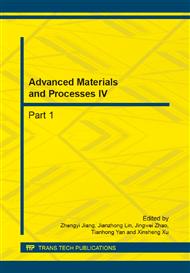p.813
p.817
p.821
p.826
p.832
p.836
p.841
p.845
p.850
Experimental Investigation on Precision Cutting Ti6Al4V Alloy Using Single Crystal Diamond Tools
Abstract:
In this work, cutting experiments were carried out on titanium alloy Ti6Al4V by using single crystal diamond tools to investigate the effects of cutting parameters on machined surface roughness. Experimental results show machined surface roughness decreases with increases in the cutting speed within a limited range, begins to increase as the factors reaches to certain values respectively, and decreases with increases in feed rate. Cutting depth has no significant influence on the machined surface roughness. The results also show that dominant mechanisms of the single crystal diamond tools are abrasive wear and adhesion wear.
Info:
Periodical:
Pages:
832-835
Citation:
Online since:
September 2014
Authors:
Price:
Сopyright:
© 2014 Trans Tech Publications Ltd. All Rights Reserved
Share:
Citation:


